The Viper V2 Pro (test) is followed by the DeathAdder V3 Pro with identical technology. Rumors have been announcing the step for weeks, now Razer is adding an e-sports variant to the popular DeathAdder family with a modified, less expansive shape and support for 4,000 Hertz via HyperPolling Wireless Dongle.
The death adder has shed its old skin
Released in 2006, the DeathAdder 1800 was the first mouse in what is now perhaps the most well-known line of ergonomic right-handed gaming mice. Over the course of more than two dozen revisions, the technical specifications have constantly changed, but one thing has remained almost unchanged: the iconic shape with a wide front and expansive curves. With the DeathAdder V3 Pro, however, this tradition has now come to an end: The latest Pro version with a focus on competitive gaming offers a much more passive, slimmer housing and is inevitably reminiscent of Zowie's EC series.
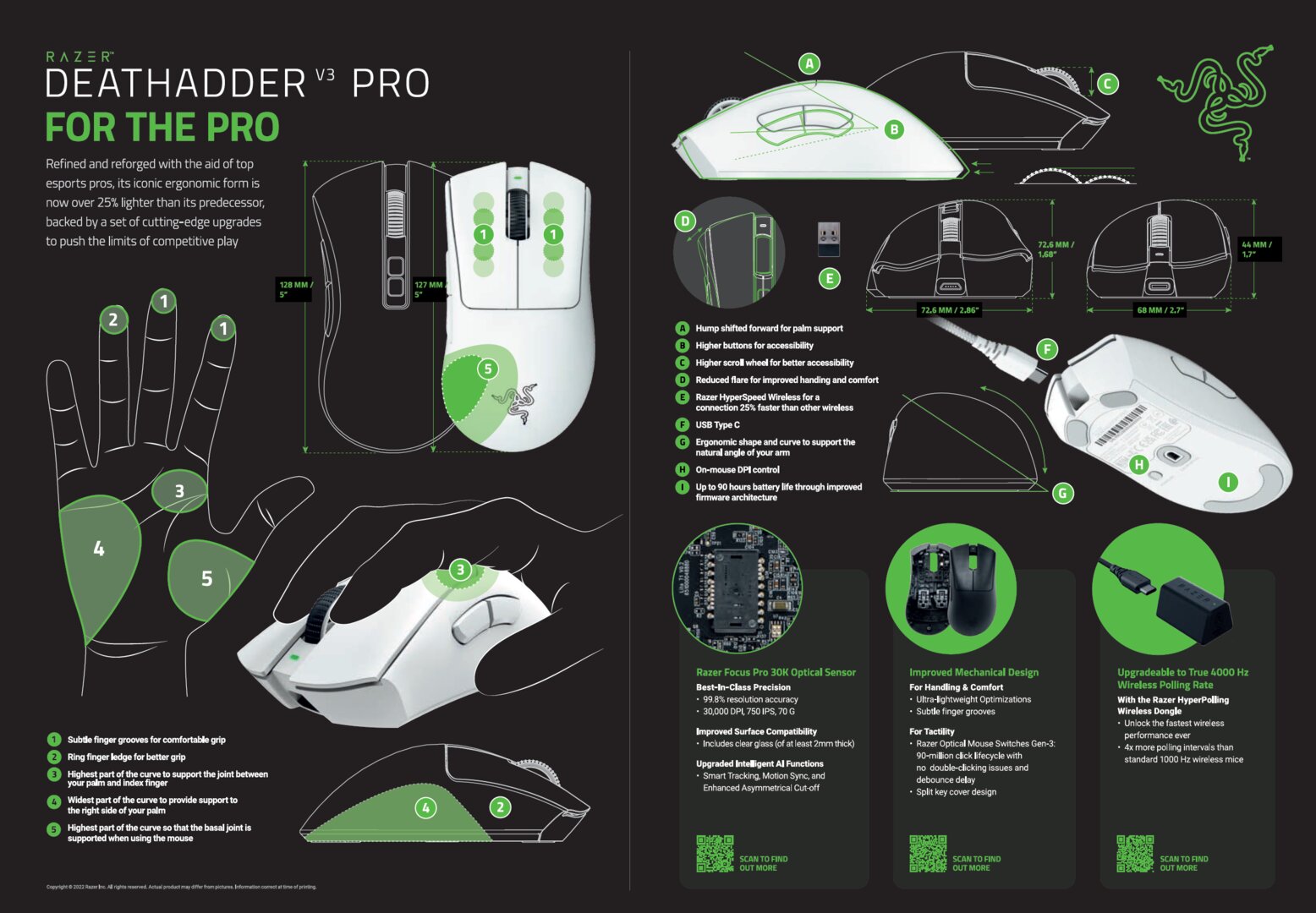 DeathAdder V3 infographic Pro (Image: Razer)
DeathAdder V3 infographic Pro (Image: Razer)Meanwhile, Razer is making further adjustments: The back of the mouse now has a stronger slope to the right side, which should allow a healthier and potentially more comfortable wrist position, and the left flank has become more planar. Along with this, Razer has moved the two thumb buttons up a little to create more contact surface. Furthermore, the mouse wheel now protrudes further from the housing, which should make it easier to scroll far, in particular, because the corresponding finger does not have to be changed as often.
With the conception and technology of the Viper V2 Pro
The change from DeathAdder V2 Pro (test) to V3 Pro goes hand in hand with the waiver of the rubberized flanks and the two additional buttons on the back of the mouse, and the RGB lighting has also been removed without replacement. This gives the right-handed mouse the same diet that Razer previously gave the Viper Ultimate (test) when stepping up to the V2 Pro. And like the Viper, four rubberized grip tapes are included in the scope of delivery, with which users can make the Death Adder's rough housing more grippy if desired. And again, there is one parameter that benefits from all of this: mass. Instead of the 88 grams of the DeathAdder V2 Pro, the V3 Pro weighs only 64 grams in white and 63 grams in black.
For comparison: The Viper V2 Pro weighs 58 grams, just like the Glorious Model D Pro, and Roccat's Kone Pro Air is 73 grams. Zowie's Form-Original EC1-C, which is still only available with a cable and weighs 80 grams, is completely out of line .
-
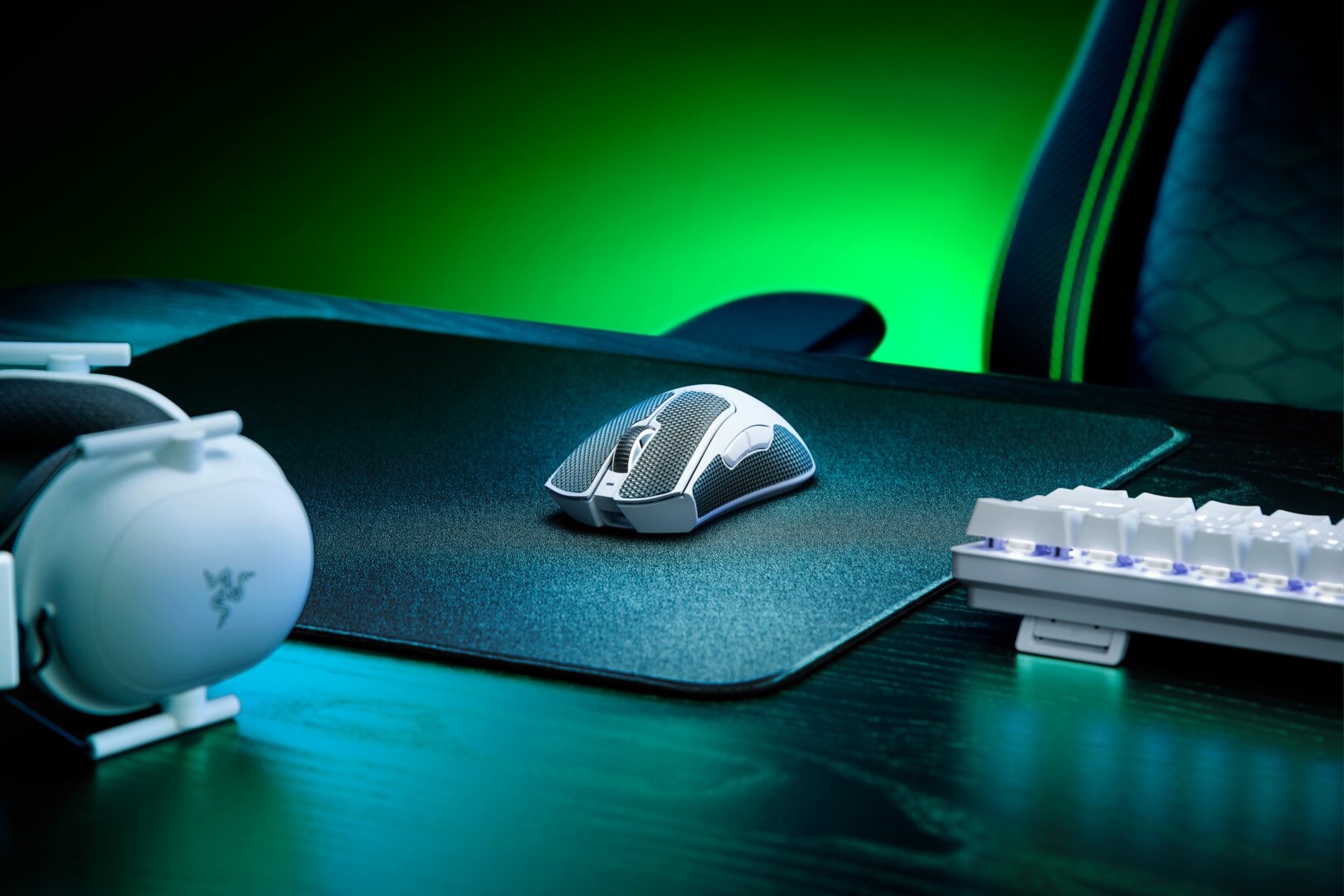 Razer DeathAdder V3 Pro (Image: Razer)
Razer DeathAdder V3 Pro (Image: Razer)
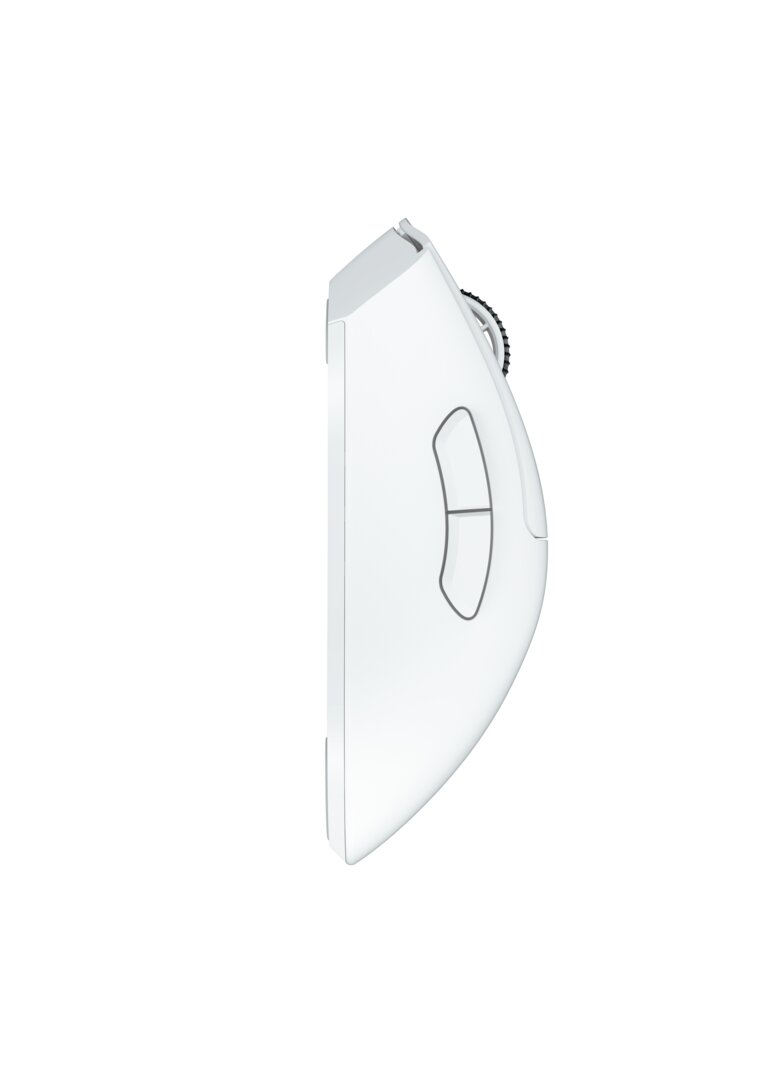 < /figure>
< /figure>
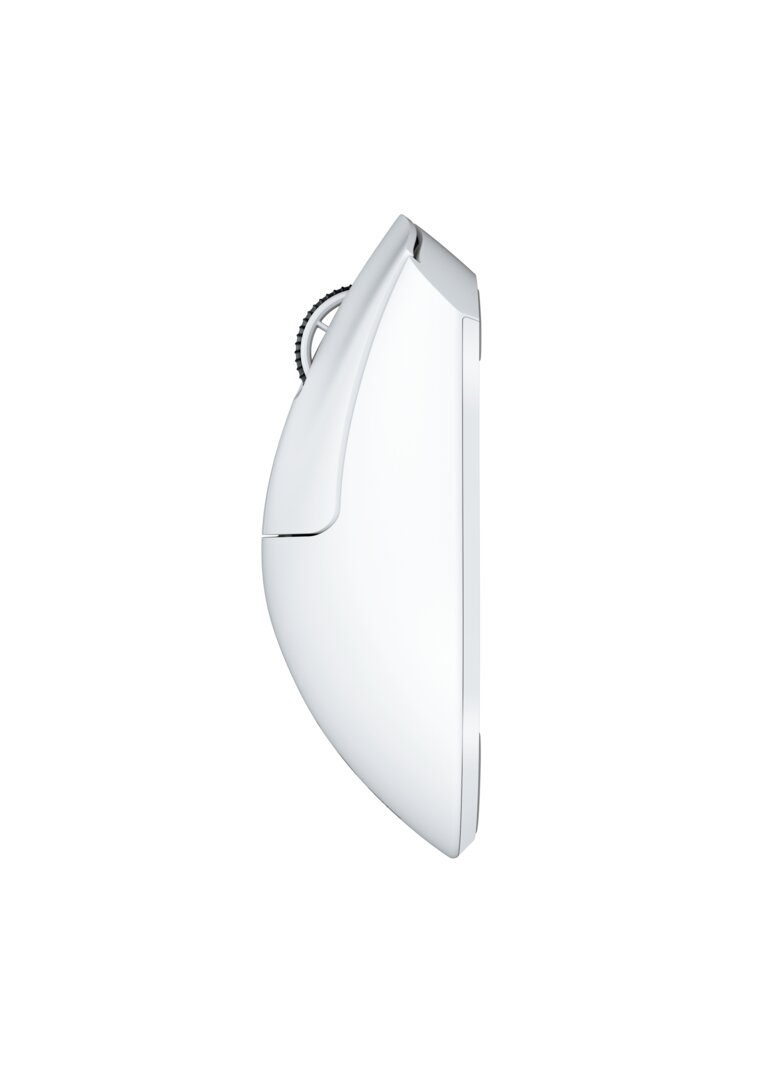

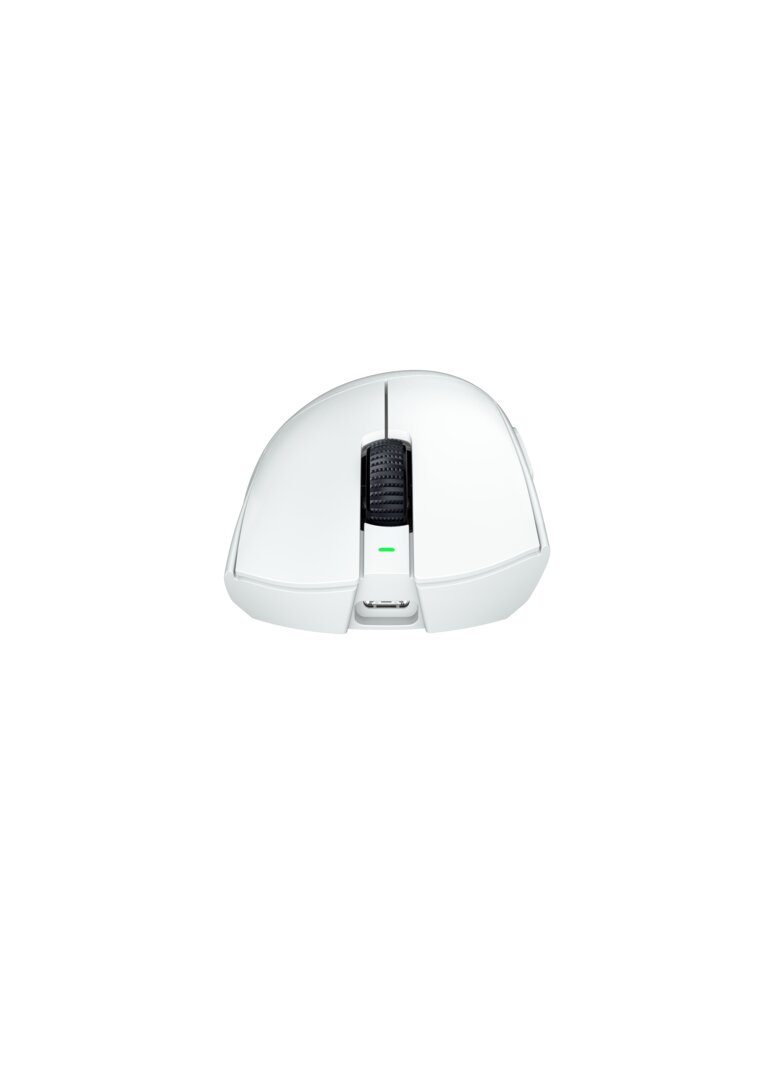
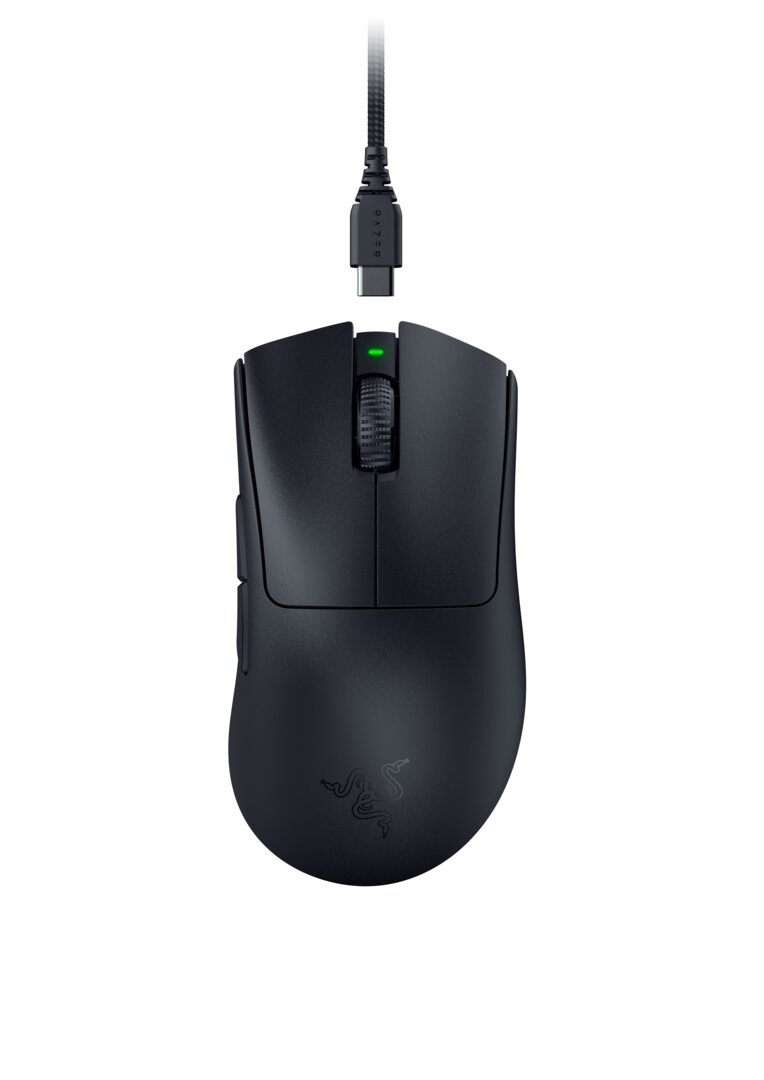
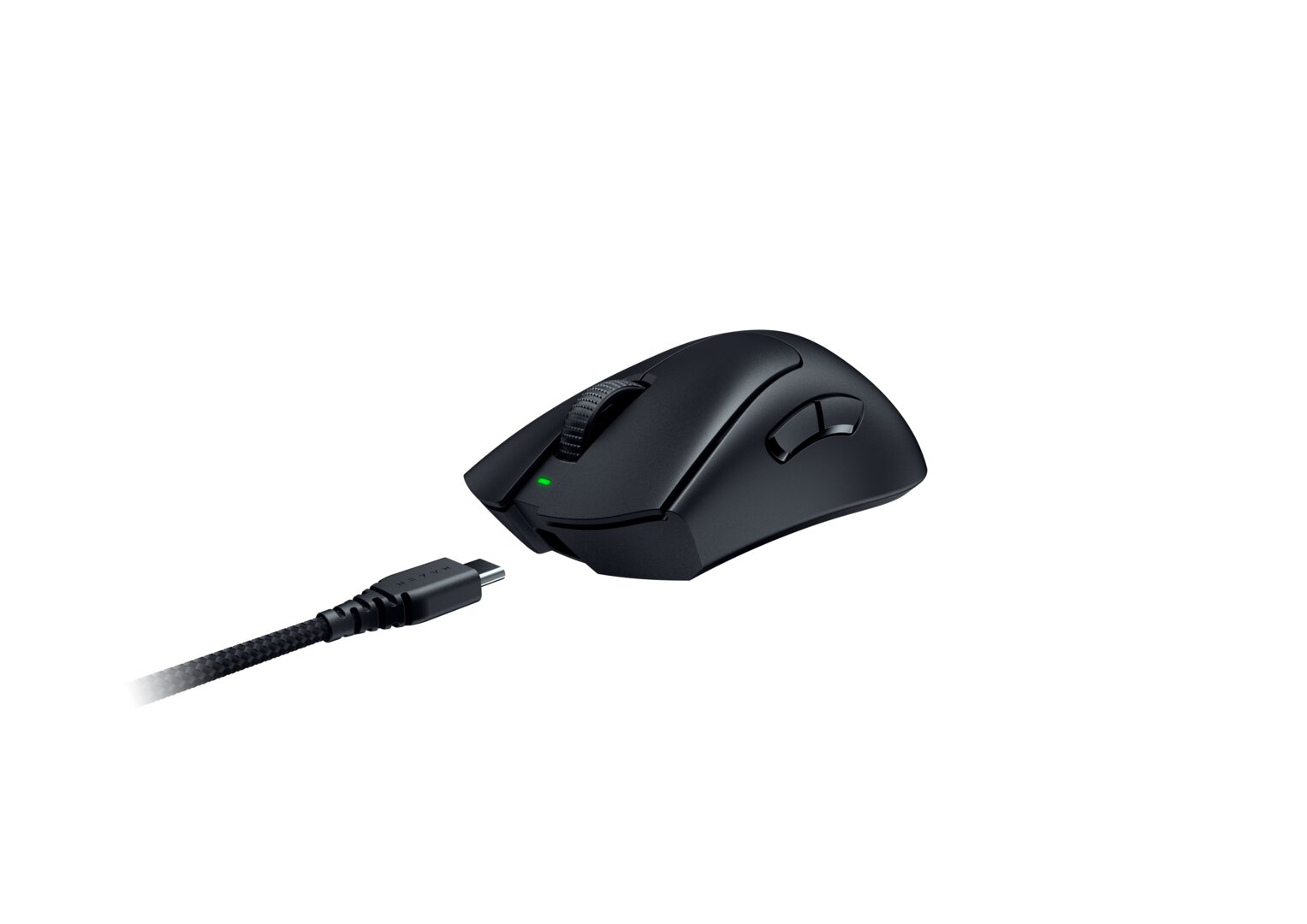
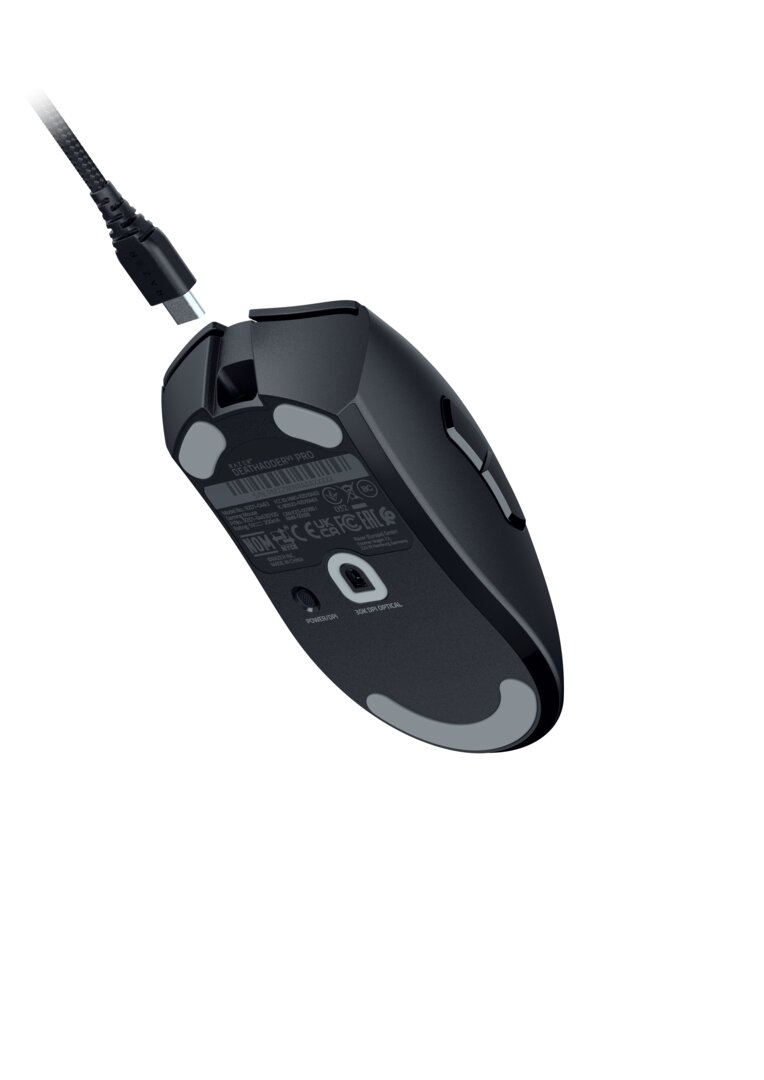
Razer DeathAdder V3 Pro (Image: Razer)
But back to the DeathAdder V3 Pro. Inside is exactly the same technology that was already convincing in the test of the Viper V2 Pro: PixArt's PAW-3950 is unparalleled, Razer's third-generation opto-mechanical buttons bypass the double-click problem, the internal memory is massacred “in favor of the weight” – no , that's no joke – and the battery life is around 90 hours. At least when connected with a USB query rate of 1,000 Hertz via the supplied wireless adapter. At 4,000 Hertz via the separately available HyperPolling Dongle, however, only around 25 hours remain. After the Viper V2 Pro, the DeathAdder V3 Pro is the second mouse across manufacturers that can be connected wirelessly with a native frequency above 1,000 hertz. >At a high price, but still available from stock
All this has its price: similar to the E-Sports Viper, the DeathAdder V3 Pro also costs around 160 euros according to the recommended retail price. In a bundle with the HyperPolling Wireless Dongle, which costs around 35 euros separately, the new Razer input device becomes the most expensive gaming mouse at around 177.50 euros, apart from Zaunkoenig's puristic M2 (test). At least the model is available from stock – in contrast to Glorious' competing Model D, which can only be pre-ordered via Group Buy. The DeathAdder V2, V2 Pro and the V2 X HyperSpeed will continue to be sold, at least for the time being.
Razer DeathAdder V3 Pro Razer DeathAdder V2 Pro Razer DeathAdder V2 X HyperSpeed Ergonomics: Right-handed Sensor: PixArt PAW-3950
Optical
Lift-Off Distance: 1.0-3.0mm PixArt PAW-3399
Optical
Lift-Off Distance: 1.0-3.0mm PixArt PAW-3319
Optical Resolution: 100 -30,000 CPI 100-20,000 CPI
5 levels 100-14,000 CPI
3 levels Velocity: 19.0 m/s 16.5 m/s 7.6 m/s Acceleration: 686 m/s² 490 m/s² 343 m/s² USB polling rate: 1,000 Hz Primary switch: Razer Optical, 90 million Clicks Razer Optical, 70 million Clicks Razer Optical, 60 million Clicks Number of keys: 6
Top: 3 Bottom: 1
Left side: 2 8
Top: 5 Bottom: 1
Left side: 2 7
Top: 5
Left side: 2 special keys : mouse wheel
cpi switcher mouse wheel
cpi switcher, profile switcher mouse wheel software: 5 profiles
fully programmable, secondary assignment
macro recording
Internal memory: 1 profile 5 profiles
Fully programmable, secondary occupancy
Macro shooting
Internal memory: 5 profiles 5 profiles
Fully programmable, secondary occupancy
Macro shooting
Internal memory: 1 profile Illumination: – Color: RGB, 1 addressable zone
Modes: breathing, waves, color loop
Reactive, game integration cpi indicator Housing: 128 × 68 × 44 mm
Hard plastic, coating
Sliding feet: PTFE (pur ) 127 × 72 × 43 mm
hard plastic
glossy elements, rubber elements 127 × 62 × 43 mm
hard plastic
glossy elements Weight: 64 grams (without cable) 88 grams (without cable) 103 grams ( or cable) Connection: USB-A to USB-C cable, 1.80 m, wrapped
Radio: 2.4 GHz
Bluetooth
proprietary battery, 90 hours runtime
Charging: Cable USB-A to micro-USB cable, 1.80 m, wrapped
Radio: 2.4 GHz
Bluetooth
proprietary battery, 70 h runtime
Charging: cable, charging station Radio: 2.4 GHz
Bluetooth
AA or AAA batteries, 235 hours run time Price: 16 €0 from €70 from €53